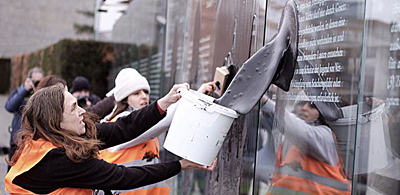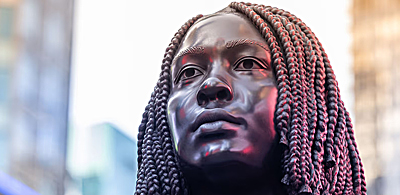Rambo the Future of Street Art?
For the last month or so, posters that look as if they were made from stencils have been appearing on city streets from Los Angeles to New York City. Giving the impression of having been created with black spray-paint and a cut-out template, the grim face on the poster is imperfect with its fuzzy edges and runny paint drips. The image looks like a thousand other stencil visual renderings you’ve seen on urban walls and sidewalks. However, the red stenciled letters make it clear this is not social commentary from an underground artist. The street poster’s minimalist message reads: “Stallone. Rambo. In Theaters January 25.”

While the promotional drive for Rambo IV began with faux stencil posters placed directly on city streets, it quickly escalated into a flood of posters used on the sides of buses and on illuminated bus benches as the release date of the film drew closer. That bilge like Rambo IV can be publicized through “guerilla marketing” does not bode well for the future of street art. This is certainly not the first instance of street art aesthetics being used for commercial purposes, but the campaign for Stallone’s film unquestionably represents a sophisticated and well co-coordinated expansion of the trend.
The motivations of those who use the street for art and the promulgation of ideas is very different from those who want to capture every available public space as a platform for marketing products. While some artists have been handsomely rewarded for selling their supposed “street cred” to corporate advertisers, others resist turning over the methods and influence of street art to commercial branding and big business. It is my fervent hope that the implacable anticommercial forces will win this, and every other battle, in the new year.




